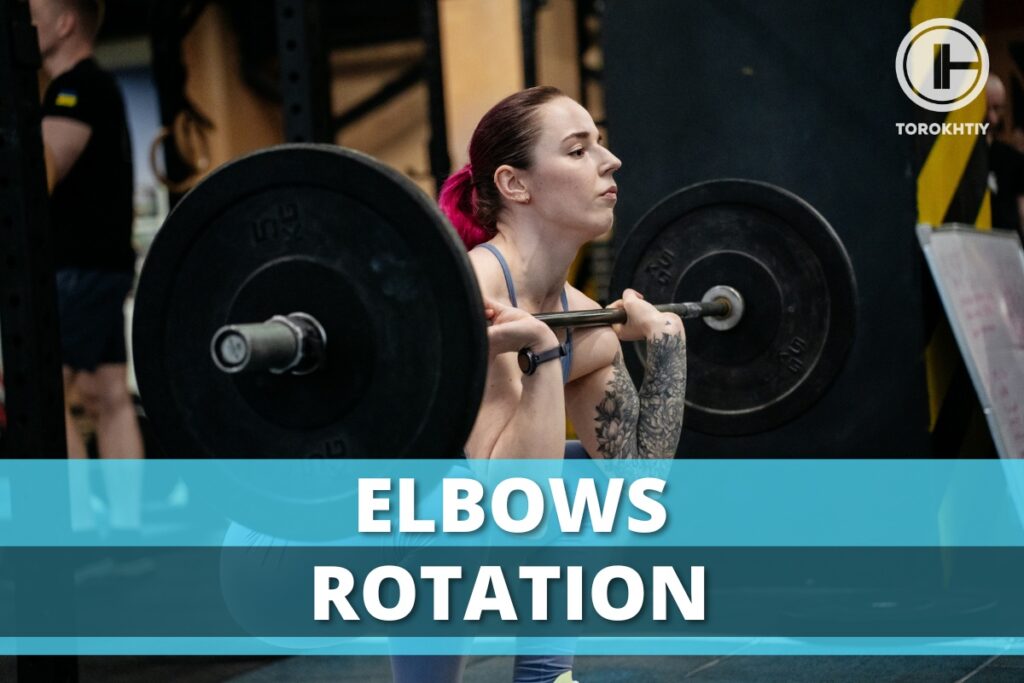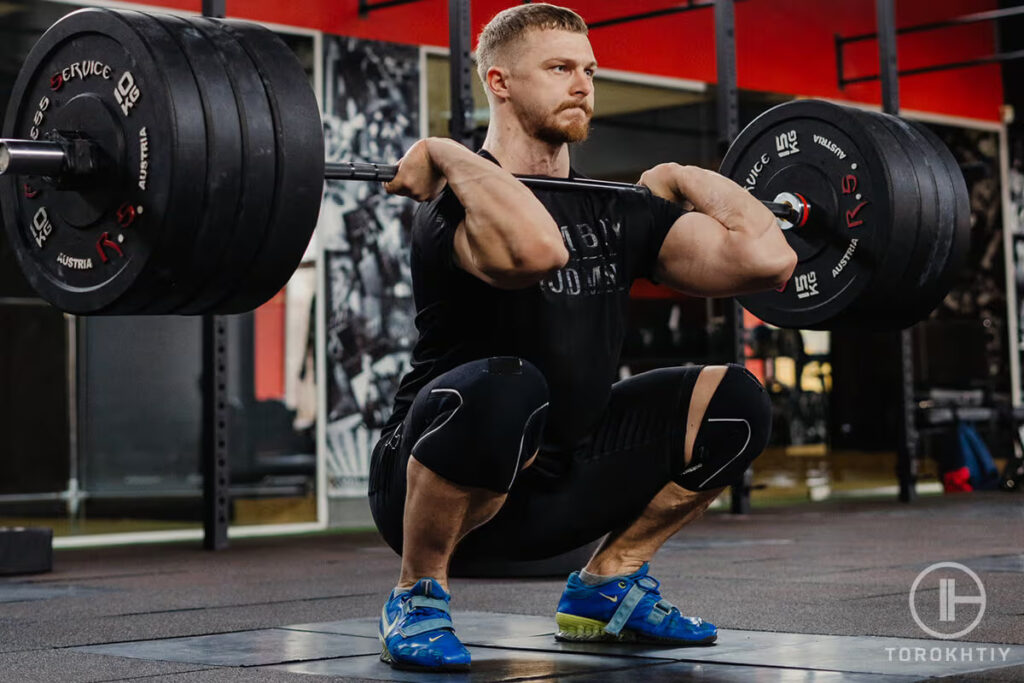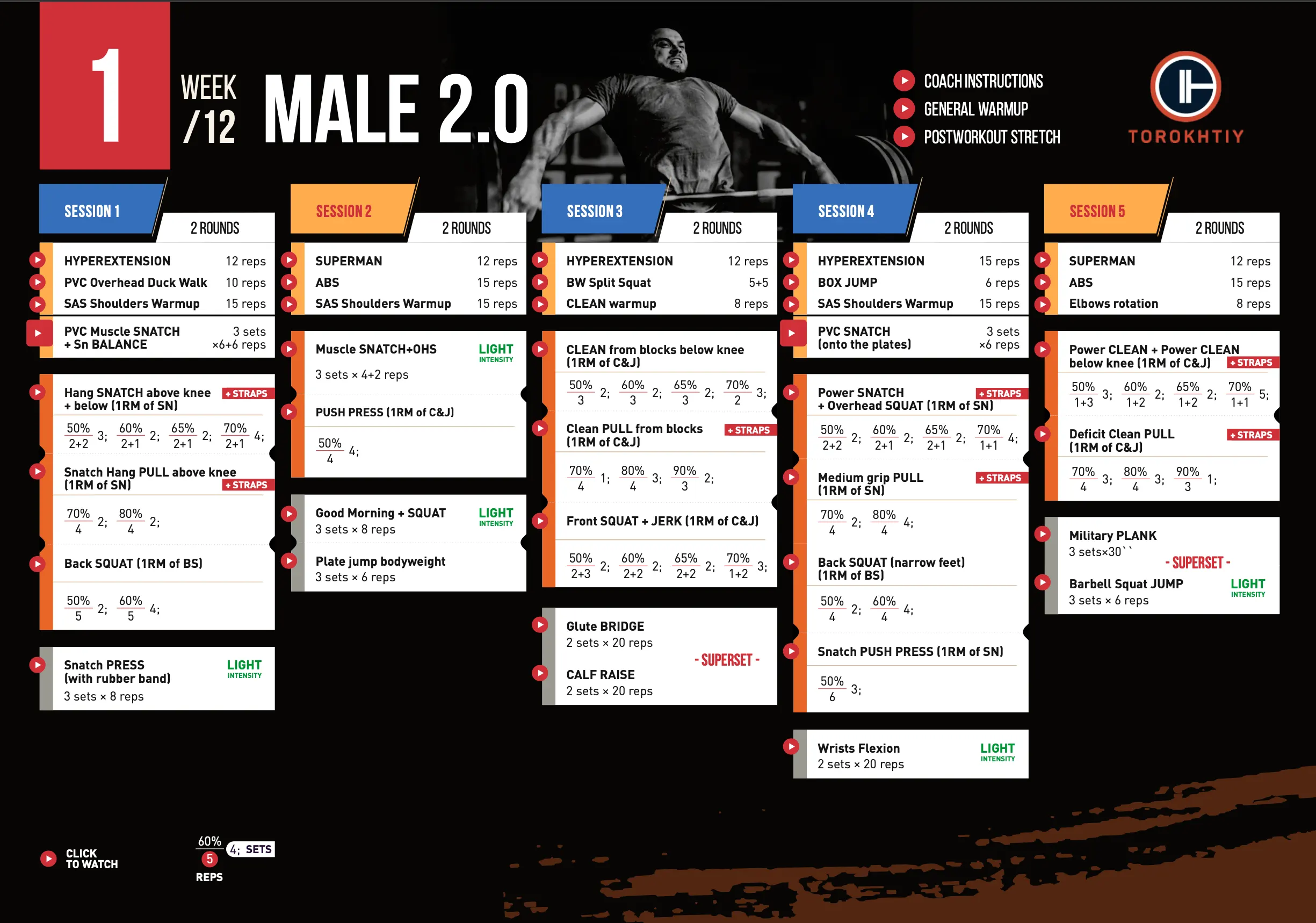Elbows Rotation
Author:
Unlock your full potential by engaging with our experts and community! Have questions about your fitness journey or looking for expert advice on weightlifting techniques? Don’t hesitate — leave a comment below and Sergii Putsov will provide a personalized answer and insights to help you reach your goals.
Torokhtiy is reader-supported. Some links are affiliate links, and we may earn a commission at no extra cost to you. See our disclosure page for details.

This article also available as audio. Check this out!
Subscribe and listen it anywhere:
Of course these photos look epic, and athletes battling to win the kilograms deserve respect. But let’s face the truth, this technique of exercise performance can make any of these athletes great, but also disabled for quite a long time. The usefulness of such upgrades is highly doubtful, even when the payout is victory in prestigious competitions, or big prize money. When the changes are just for fun, or even “for health”, then there’s no benefit at all. You might find the payout is damage to your body or other dangerous consequences.
I am personally familiar with injury to the forearms caused by the incorrect elbow fold. I spent 6 months in treatment and took 4th place in the World Junior Championships, instead of the medals I was dreaming of. And, of course, I have friends who are weightlifters who have broken both of their hands. One of them could not return to full-fledged training because of this injury.
You may like it:
- Detailed Olympic Weightlifting Program For Beginners
- 12-Week Weightlifting Program For Women (Detailed Example)
- Create Your Olympic Weightlifting Program (Examples Included)
Follow us!

Free!
Get a 2-week Weightlifting Program as a bonus for the subscription to kickstart your training plan!

Free!
What is the essence of the problem? In my opinion, there are several:
- Primary mechanics of the movement – training and understanding the essence of the movement and the main positions;
- Flexibility and mobility – these skills can change for better or worse with age, changes in body weight, and of course it depends on the level of preparedness;
- Level of skill and stability of technique in the conditions of extreme loads.
Now let’s look closer at each of these reasons:
Primary movement mechanics
I always tell this at my seminars. I give examples on the video of movements which we see in top athletes at international competitions. An inexperienced weightlifter or functional athlete can not be understood and deciphered. Why? The CLEAN movement itself has very short amplitude, very high speed of movement. It demonstrates the unique technique to which an athlete comes to after 10-15 years of training. Competitive technique of top athletes is something to admire as a viewer.
But, in my opinion, not every novice athlete can understand how to lift a barbell, especially in CLEAN. Briefly, we remember that CLEAN consists of basic phases: the starting position, 1st and 2nd pull, power position, getting under the barbell and the separate element of the rotation of the elbows around the barbell, receiving position, recovery from the squat. So, rotation of the elbows is a specific element of the exercise which must be studied and understood correctly, so that their hands will lift the barbell, but not cause injury. For all, let me remind you once again that hands in weightlifting are needed more to control the barbell, rather than lift it.
Flexibility and mobility

In general, the stereotype that in weightlifting you need to select muscular strong men is a bad one. A weightlifter is: character (spirit), flexibility and power, and if we are talking about functional training, everything else as well. But I’m talking about flexibility and mobility, because without proper development of these skills, weightlifting exercises can be really traumatic. More precisely, without flexibility, what you do will not actually be the correct CLEAN and it can be traumatic. I focus on this because now young athletes come to weightlifting not only at 12-14 years, but also at 30-35 years, and these are often quite heavy and strong athletes, especially in the upper body with insufficient joints mobility and elasticity muscles and ligaments.
In this regard, there are big problems with the mastery of technology, and for those who do not have the patience and desire for it, injuries and fractures can happen. Also a lot of athletes use the wrist wraps. Indeed, they provide a certain kind of fixation and support of the wrists during the exercises. For many athletes, it is also a powerful psychological factor. As I said, I am not against this, but the work on flexibility and mobility should be a priority.
The level of skill and stability of technique in the conditions of extreme loads
CLEAN is not the simple exercise it seems at first glance and the technical component in it is really great. In order to form adequate skill, you need time, and one athlete will need 2 months, while his friend may take 6 months, and that’s normal. Time is needed just to repeat this exercise hundreds or maybe thousands of times in many variations and positions with a PVC and bar and only then start trying to set PR or kill yourself in the complexities. Otherwise, the risk of injuring yourself for your own money is high and not justified.
I want to remind and caution all «newbies» with fewer than 2 years of experience: in conditions of lifting weights from 90% and higher, and also on the background of fatigue during WOD, when your heart rate is below 200 beats/min, the chance you won’t show your best technique is very high. Regarding my experience, the crunch of breaking bones and the tearing of ligaments is not something you need to chase the big scales for, forgetting the proper technique.
My advice is to make your weightlifting classes bring you benefits and pleasure, and not let your photos be an example of how NOT to do it right. Learn how to control your body and remember that a good technique and a properly trained body will let you train beautifully and safely for many years, with good feelings, and great results.
Train together – train right
Related articles:
You might be interested in:
Why Trust Us?
With over 20 years in Olympic weightlifting, strength training, nutrition coaching, and general fitness our team does its best to provide the audience with ultimate support and meet the needs and requirements of advanced athletes and professional lifters, as well as people who strive to open new opportunities and develop their physical capabilities with us.
By trusting the recommendations of our certified experts in coaching, nutrition, and sports training programming, as well as scientific consultants, and physiotherapists, we provide you with thorough, well-considered, and scientifically proven content. All the information given in the articles concerning workout programming, separate exercises, and athletic performance, in general, is based on verified data.
The product testing process is described in more detail here.
Author: Sergii Putsov
Head of Sport Science, PhD
Best Results: Snatch – 165 kg,
C&J – 200 kg
Sergii Putsov, Ph.D., is a former professional weightlifter and National team member, achieving multiple medals in the 94 kg weight category at national competitions. With a Master’s degree in “Olympic & Professional Sport Training” and a Sport Science Ph.D. from the International Olympic Academy, Greece, Sergii now leads as the Head of Sport Science. He specializes in designing training programs, writing insightful blog articles, providing live commentary at international weightlifting events, and conducting educational seminars worldwide alongside Olympic weightlifting expert Oleksiy Torokhtiy.









Still have questions after reading our article? Unlock your full potential by engaging with our experts and community! Don’t hesitate — leave a comment below and Sergii Putsov will provide a personalized answer and insights to help you reach your goals.